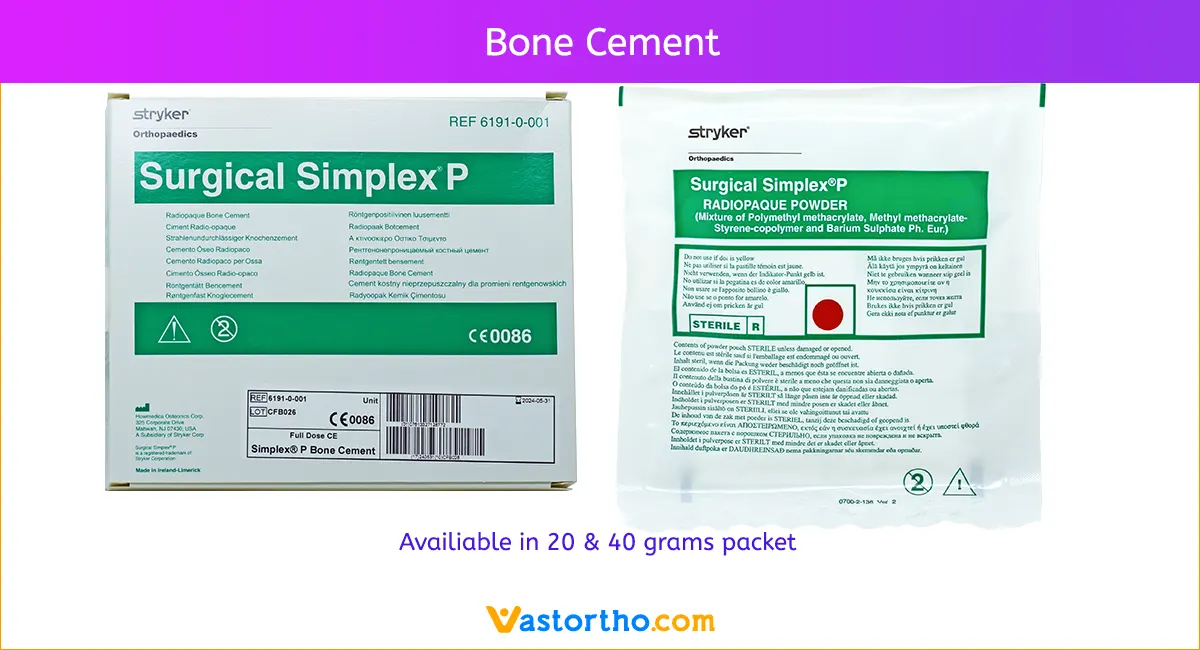Polymerization
Polymerization is a chemical reaction in which two or more small molecules combine to form larger molecules that contain repeating structural units of the original molecules. In the case of bone cement, the polymerization process starts when the copolymer powder and monomer liquid meet, reacting together to produce an initiation reaction creating free radicals that cause the polymerization of the monomer molecules. The original polymer beads of the powder are bonded into a dough-like mass, which eventually hardens into hard cement.
The polymerization process is an exothermic reaction, which means it produces heat. With a maximum in vivo temperature of 40 °C to 47 °C, this thermal energy is dissipated into the circulating blood, the prosthesis, and the surrounding tissue. Once polymerization ends, the temperature decreases and the cement starts to shrink.
Phases And Times
The polymerization process can be divided into four different phases:
Mixing, waiting, working, and setting Time. Dough Time and Setting Time are measured from the beginning of mixing; Working Time is the interval between Dough Time and Setting Time.
Mixing Phase
The mixing phase represents the time taken to fully integrate the powder and liquid. As the monomer starts to dissolve the polymer powder, the benzoyl peroxide is released into the mixture. This release of the initiator benzoyl peroxide and the accelerator DMPT is actually what causes the cement to begin the polymerization process. It is important for the cement to be mixed homogeneously, thus minimizing the number of pores.
Waiting Phase/Dough Time
During this phase, typically lasting several minutes, the cement achieves a suitable viscosity for handling (I.e, can be handled without sticking to gloves). The cement is a sticky dough for most of this phase.
Dough time is the time point measured from the beginning of mixing to the point when the cement no longer sticks to surgical gloves. Under typical conditions (23°C-25°C, 65% relative humidity), dough time is 2-3 minutes after beginning of mixing for most bone cements. Before this time point, after the components are well mixed, the bone cement may be loaded into a syringe, cartridge, or injection gun for assisted application.
Working Phase/Working Time
The working phase is the period during which the cement can be manipulated and the prosthesis can be inserted. The working phase results in an increase in viscosity and the generation of heat from the cement. The implant must be implanted before the end of the working phase. Working time is the interval between the dough and setting times, typically 5-8 minutes. The use of mechanical introduction tools, such as syringes and cartridges, extends this time by 1 to 1.5 min.
Setting Phase/Setting Time
During this phase, the cement hardens (cures) and sets completely, and the temperature reaches its peak. The cement continues to undergo both volumetric and thermal shrinkage as it cools to body temperature. Hardening is influenced by the cement temperature, the operative room temperature, and the body temperature of the patient. Setting time is the time point measured from the beginning of mixing until the time at which the exothermic reaction heats the cement to a temperature that is exactly halfway between the ambient and maximum temperature (ie, 50% of its maximum value), usually about 8-10 minutes. The temperature increase is due to conversion of chemical to thermal energy as polymerization takes place.
Factors that affect dough, working, and setting times include the following
Mixing Process: Mixing that is too rapid can accelerate dough time and is not desirable since it may produce a weaker, more porous bone cement.
Ambient Temperature: Increased temperature reduces both dough and setting times approximately 5% per degree Centigrade, whereas decreased temperature increases them at essentially the same rate.
Humidity: High humidity accelerates setting time whereas low humidity retards it.



